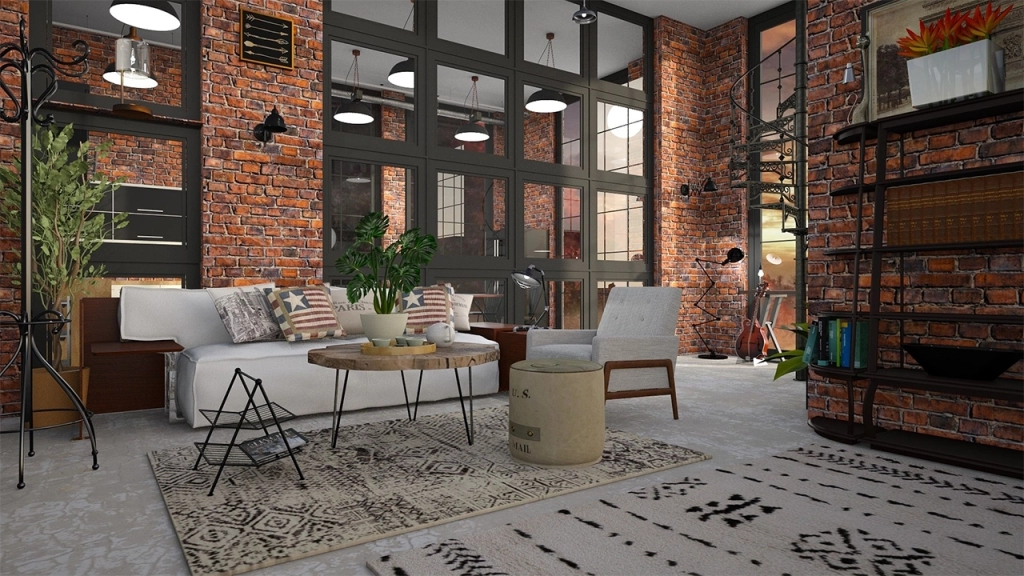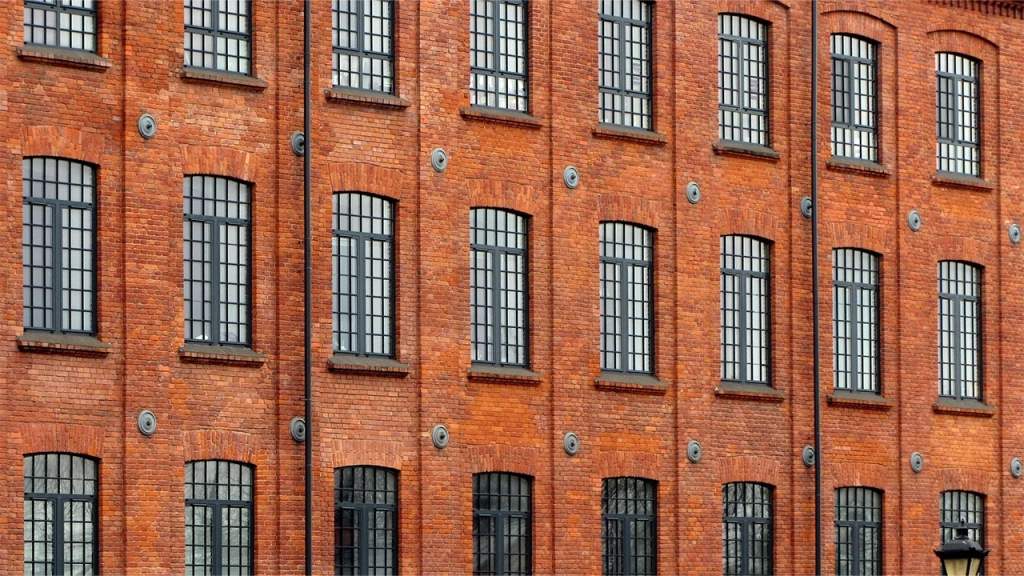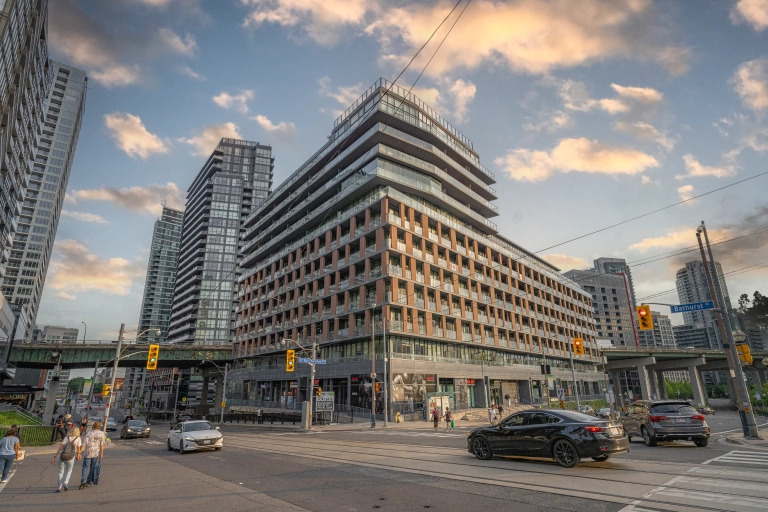Are you considering a loft apartment as your next home in Toronto?
Loft apartments have become a popular housing option in recent years, offering a unique blend of urban style and spacious living. As a real estate agent who helps people buy, sell, and lease properties in Toronto, I’ve seen many homebuyers and renters become interested in lofts for their distinctive features and location advantages.
In this article, I’ll provide you with a comprehensive guide to lofts in Toronto, covering everything from their definition and design to the differences between lofts and apartments or studio apartments. Whether you’re a first-time homebuyer, a renter looking for a new home, or an investor interested in the real estate market, this article will give you the insights and tips you need to make informed decisions about lofts in Toronto.
In the following sections, I’ll dive into the details of lofts in Toronto, covering topics such as the definition of a loft, the differences between lofts and apartments or studios, the costs of living in a loft apartment, and the process of converting a loft. I’ll also share some tips and advice on buying, renting, or selling loft apartments in Toronto, including questions to ask when viewing a loft. By the end of this article, you’ll have a solid understanding of Toronto lofts and be able to make informed decisions about your next home.
What Is A Loft?

A loft is a type of residential space that is typically located in former industrial buildings or commercial buildings and features an open floor plan, high ceilings, and large windows. Lofts are known for their spacious and airy design, often featuring exposed brick, ductwork, or pipes that add to their industrial charm.
Origin of lofts & Toronto loft apartments
Lofts were originally used as workspaces for artists and musicians in the 1960s and 1970s, particularly in New York City. These New York City buildings were often former industrial or commercial spaces that had fallen into disuse, and artists and creatives saw potential in their high ceilings and open spaces for creating living arrangements that were both functional and inspiring. Over time, lofts became more mainstream and are now a popular housing option for many homebuyers and renters.
In Toronto, the history of loft apartments follows a similar path. The origin of loft apartments in Toronto can be traced back to the 1960s and 1970s when many of the city’s industrial areas were in decline. Many of these areas were located close to downtown Toronto, and developers saw an opportunity to repurpose these industrial spaces into unique and affordable living spaces.
These industrial buildings were often large, with high ceilings and large windows, making them perfect candidates for loft conversions. The first loft conversions in Toronto were located in areas such as the Fashion District, King West, and Queen West, which were once bustling industrial areas that had fallen into disuse. Today, these areas are some of the most sought-after neighbourhoods for young professionals in the city and are home to a vibrant arts and culture scene.
Common features of a loft apartment
Loft apartments are typically characterized by their open space, high ceilings, and windows that allow for plenty of natural light. They may also feature exposed beams, brick, concrete, or ductwork that gives them a distinct industrial look. Many loft apartments offer flexible living spaces, with minimal walls or partitions that allow residents to customize their living arrangements according to their needs – one of the unique advantages of loft living.
Living in a loft apartment offers several advantages, including a spacious and unique living space, a central location in urban areas, and the potential for customization. Lofts are also often situated in trendy and vibrant neighbourhoods that offer a range of amenities and entertainment options.
However, there are also some disadvantages to living in a loft apartment, such as noise from surrounding areas, lack of privacy, and the potential for higher heating and cooling costs due to the large windows and high ceilings.
Hard Lofts vs. Soft Lofts

Lofts can be categorized into two main types – hard lofts and soft lofts.
A hard loft, also known as a “true” loft, refers to a converted industrial or commercial space that has been transformed into a residential unit.
Soft lofts, on the other hand, are purpose-built residential buildings that feature loft-style design elements, but have never been used for commercial or industrial purposes.
Hard lofts typically have distinct features such as exposed brick, high ceilings, large windows, and original wood or steel beams. Their loft space is also quite large. They also often feature an open-concept layout and industrial-style finishes.
Soft lofts, on the other hand, are designed to emulate the look and feel of hard lofts, but often feature modern amenities and finishes such as stainless steel appliances and granite countertops with less loft space. Soft lofts typically have lower ceilings than hard lofts and may not have as much exposed brick or wood.
The advantages and disadvantages of living in a hard loft versus a soft loft will depend on personal preferences and lifestyle.
Hard lofts are often sought after for their unique architectural features and historical significance. They offer a sense of character and authenticity that can be hard to find in modern residential buildings. However, hard lofts may have fewer modern amenities and may be more challenging to renovate due to the building’s historical significance.
Soft lofts, on the other hand, offer more modern and comfortable living spaces, often with newer amenities and finishes. Soft lofts can be more expensive than hard lofts, but they may be easier to maintain and can offer a more luxurious living experience.
What Is A Loft Conversion?

A loft conversion is a process of transforming a space that was previously not meant for residential use into a livable space. Loft conversions have become increasingly popular in recent years, particularly in urban areas such as Toronto.
There are several reasons why someone might choose to convert a loft, including the need for additional space, the desire for a more open layout, and the potential for added value to the property. A loft conversion can also be a cost-effective way to create additional living space without the expense and disruption of moving to a new property.
In Toronto, there are many examples of loft conversions that have transformed historic buildings and warehouses into trendy loft apartments. One example is the Candy Factory Lofts, a former candy factory in downtown Toronto that was converted into loft-style condominiums. Another is the Toy Factory Lofts, a former toy factory in Liberty Village that was converted into a mixed-use space with residential lofts, offices, and retail space.
Loft apartment conversions can be a great way to make use of otherwise unused space in a building, creating unique and stylish living spaces in urban areas like Toronto.
What Is A Loft vs. An Apartment?

The primary difference between a loft and an apartment is the layout and design of the living space.
Apartments and studio apartments typically feature a series of smaller rooms that are separated by walls and doors, while lofts have an open floor plan that allows for more loft space with spacious and flexible living area. Lofts also typically have higher ceilings and large floor-to-ceiling windows, which can make the space feel brighter and more airy.
In many urban areas, lofts are generally more expensive than apartments due to their unique design and prime location. Lofts are often found in renovated industrial or commercial buildings that have been repurposed for residential use, which can make them harder to come by and more expensive to rent or purchase. An apartment or studio apartment, on the other hand, is more widely available and can range in price depending on the location and amenities.
Lofts and apartments also appeal to different lifestyles and demographics. Lofts are often sought after by artists, creatives, and young professionals who appreciate the unique design and location of these loft spaces and are ready to embrace loft life.
Apartments, on the other hand, are more widely available and can cater to a broader range of lifestyles and needs. Apartments may also offer more amenities and community features, such as fitness centers, swimming pools, or on-site management, that can make them appealing to families or individuals looking for a more traditional living experience.
Tips For Buying Or Renting A Loft In Toronto

If you’re considering buying or renting a loft in Toronto, there are several things you should keep in mind to make the process as smooth and successful as possible. Here are some tips to help you along the way.
Questions to ask when viewing a loft
- What was the original use of the building?
- When was the original building built?
- When was the building converted into residential lofts?
- What are the noise levels like in the building and neighbourhood?
- What is included in the rent or sale price?
- Are there any upcoming building renovations or repairs?
- What is the parking situation like?
- What is the pet policy?
- Is there any additional storage space?
Should you use a real estate agent to find a loft rental in Toronto?
While searching for a rental property in Toronto, using a real estate agent is not a requirement, but it can be advantageous. Luckily, there are Toronto REALTORS® for rentals in Toronto who offer an unparalleled service to renters and landlords.
A professional Toronto rental agent can save you time and the hassle of searching for a suitable rental property by doing the legwork for you and providing professional advice. If you decide to use an agent, it is essential to choose someone who is experienced with the Toronto real estate market and has experience working with lofts.
For example, Marco Pedri, a broker with Shoreline Realty Corp., Brokerage, is well-versed in the Toronto real estate market and has significant experience working with lofts working with both tenants and landlords.
Ready To Find A Loft In Toronto?
In conclusion, lofts have become a popular housing option in Toronto due to their unique features and design. Lofts are an excellent choice for individuals who are looking for a modern, spacious, and trendy living space that reflects their personality.
In this article, we have covered what a loft is, the differences between lofts and apartments, lofts and studios, hard lofts and soft lofts, and the loft conversion process. We have also provided helpful tips for buying or renting a loft in Toronto, such as finding a reputable real estate agent like Marco Pedri, who has extensive knowledge of the Toronto real estate market and experience working with lofts.
In summary, lofts are a great option for homebuyers or renters in Toronto. They provide an open-concept living arrangement with a lot of square footage. They also have unique design elements such as exposed brick walls, exposed concrete floors, and offer a trendy lifestyle for loft dwellers. If you are interested in buying, selling, or renting a loft in Toronto, please don’t hesitate to contact me for professional real estate assistance.


